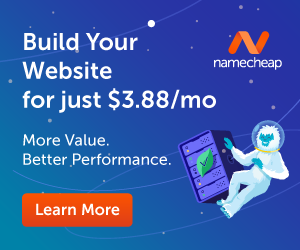Understanding Content Management Systems
Definition and basic concepts of CMS
A Content Management System (CMS) is a software application that allows users to create, manage, and modify digital content without the need for specialized technical knowledge. It provides a user-friendly interface for content creation, storage, and publication, making it easier for individuals and organizations to maintain their websites efficiently.
Key benefits of using a CMS
Using a CMS offers numerous advantages, including simplified content creation and management, collaborative workflows, consistent design across web pages, easy updates and maintenance, and improved SEO capabilities. These benefits make CMS platforms essential tools for businesses of all sizes looking to establish a strong online presence.
Types of CMS (Traditional, Headless, Hybrid)
There are three main types of CMS:
- Traditional CMS: Combines content management and frontend presentation in a single system.
- Headless CMS: Separates content management from the frontend, allowing for greater flexibility in content delivery across multiple channels.
- Hybrid CMS: Offers a combination of traditional and headless capabilities, providing the best of both worlds.
Each type caters to different needs and use cases, allowing organizations to choose the most suitable option for their specific requirements.
Essential features to look for in a CMS
When selecting a CMS, consider the following essential features:
- User-friendly interface
- Customizable templates and themes
- Robust security measures
- SEO optimization tools
- Multi-user collaboration capabilities
- Plugin and extension support
- Mobile responsiveness
- Analytics integration
These features ensure that your chosen CMS can effectively support your content management needs and help you achieve your online goals.
WordPress: The Market Leader
Current market share and popularity
WordPress continues to dominate the CMS market in 2024, powering over 43% of all websites on the internet. Its widespread adoption can be attributed to its flexibility, ease of use, and vast ecosystem of themes and plugins.
Key features and capabilities
WordPress offers a wide range of features and capabilities, including:
- Intuitive content editor
- Extensive theme and plugin library
- Customizable design options
- Multi-user management
- Built-in SEO tools
- Regular updates and security patches
These features make WordPress a versatile platform suitable for various types of websites, from personal blogs to complex e-commerce stores.
Pros and cons
Pros of WordPress include its user-friendly interface, extensive customization options, and large community support. However, it also has some cons, such as potential security vulnerabilities if not properly maintained and the need for regular updates and backups.
Best use cases and ideal users
WordPress is ideal for bloggers, small to medium-sized businesses, and e-commerce sites. It’s particularly well-suited for users who want a balance between ease of use and flexibility in design and functionality.
Pricing structure and hosting options
WordPress itself is open-source and free to use. However, users need to factor in costs for hosting, domain registration, and premium themes or plugins. Many hosting providers offer specialized WordPress hosting plans with varying prices based on features and resources.
Top Enterprise CMS Solutions
Drupal: Features and enterprise capabilities
Drupal is a powerful, open-source CMS known for its robustness and scalability. It offers advanced content modeling, multi-site management, and strong security features, making it a popular choice for large organizations and government websites.
Adobe Experience Manager
Adobe Experience Manager (AEM) is a comprehensive digital experience platform that combines content management with digital asset management and e-commerce capabilities. It’s designed for large enterprises looking to deliver personalized, cross-channel experiences at scale.
Sitecore advantages
Sitecore is an enterprise-grade CMS that excels in delivering personalized digital experiences. It offers advanced analytics, marketing automation, and AI-powered content optimization, making it ideal for businesses focused on delivering highly tailored customer journeys.
Enterprise pricing considerations
Enterprise CMS solutions typically come with higher price tags compared to open-source or small business options. Pricing often includes licensing fees, implementation costs, and ongoing support and maintenance expenses. Organizations should carefully evaluate their long-term needs and budget constraints when considering enterprise CMS options.
Security and scalability features
Enterprise CMS platforms prioritize security and scalability, offering features such as:
- Advanced user permissions and role management
- Regular security audits and updates
- Compliance with industry standards (e.g., GDPR, HIPAA)
- Load balancing and content delivery networks (CDNs)
- Disaster recovery and backup solutions
These features ensure that enterprise websites can handle high traffic volumes and protect sensitive data effectively.
Best Headless CMS Platforms
Contentful overview
Contentful is a popular headless CMS that provides a flexible content infrastructure for digital teams. It offers a user-friendly interface for content creators and robust APIs for developers, enabling seamless content delivery across multiple platforms and devices.
Strapi features
Strapi is an open-source headless CMS that emphasizes developer experience and customization. It provides a highly flexible content structure, built-in authentication, and a plugin system for extending functionality. Strapi is particularly well-suited for projects requiring a tailored CMS solution.
Benefits of headless architecture
Headless CMS architecture offers several advantages:
- Greater flexibility in content delivery across multiple channels
- Improved performance due to reduced server load
- Enhanced security by separating the content management backend from the frontend
- Future-proofing content for emerging technologies and platforms
- Easier integration with other systems and services
These benefits make headless CMS an attractive option for organizations looking to create omnichannel experiences and maintain agility in their content strategy.
Implementation considerations
When implementing a headless CMS, consider the following factors:
- Developer expertise required for frontend development
- Integration with existing systems and workflows
- Content modeling and structuring for optimal reuse
- API performance and scalability
- Content preview and staging capabilities
Addressing these considerations early in the implementation process can help ensure a smooth transition to a headless CMS architecture.
Pricing comparison
Pricing for headless CMS platforms varies widely. Some, like Strapi, offer free open-source versions with paid enterprise options. Others, like Contentful, use tiered pricing based on usage and features. When comparing prices, consider factors such as API calls, user seats, and support levels to determine the most cost-effective solution for your needs.
User-Friendly CMS Options for Beginners
Wix platform overview
Wix is a user-friendly website builder and CMS that caters to beginners and small businesses. It offers a drag-and-drop interface, numerous customizable templates, and built-in features like e-commerce and blogging. Wix’s intuitive design makes it easy for non-technical users to create professional-looking websites quickly.
Squarespace capabilities
Squarespace is known for its sleek, modern templates and all-in-one platform approach. It provides a range of features including e-commerce, blogging, and analytics. Squarespace is particularly popular among creatives and small businesses looking for visually appealing websites without the need for extensive customization.
Webflow features
Webflow offers a unique blend of visual design tools and CMS capabilities. It allows users to create custom designs without coding while providing more advanced features for those with web development experience. Webflow is ideal for designers and agencies looking for greater control over their website’s appearance and functionality.
Learning curve comparison
When comparing the learning curves of these platforms:
- Wix has the shallowest learning curve, ideal for complete beginners
- Squarespace requires slightly more time to master but offers more design flexibility
- Webflow has the steepest learning curve but provides the most design control
Consider your technical skills and the time you’re willing to invest in learning when choosing between these options.
Cost-effectiveness analysis
All three platforms offer various pricing tiers to suit different needs:
- Wix provides a free plan with basic features and paid plans for more advanced functionality
- Squarespace offers only paid plans but includes more features in its base packages
- Webflow’s pricing is more complex, with separate charges for hosting and CMS usage
Evaluate the features you need and compare the long-term costs to determine the most cost-effective solution for your project.
E-commerce Focused CMS Platforms
Shopify features and capabilities
Shopify is a leading e-commerce platform that combines robust online store functionality with content management capabilities. It offers features such as inventory management, secure payment processing, and customizable themes. Shopify’s extensive app marketplace allows users to extend their store’s functionality to meet specific business needs.
WooCommerce integration
WooCommerce is a popular e-commerce plugin for WordPress, transforming a standard WordPress site into a fully functional online store. It offers seamless integration with existing WordPress content, making it an excellent choice for businesses that want to add e-commerce functionality to their existing WordPress website.
BigCommerce overview
BigCommerce is an enterprise-grade e-commerce platform that offers a wide range of features for online retailers. It provides multi-channel selling capabilities, advanced SEO tools, and customizable storefronts. BigCommerce is well-suited for businesses looking to scale their online operations and expand into new markets.
Payment gateway options
E-commerce CMS platforms typically offer integration with various payment gateways:
- Shopify has its own payment solution and supports numerous third-party gateways
- WooCommerce integrates with popular payment processors like PayPal and Stripe
- BigCommerce offers a wide selection of payment options, including digital wallets and buy now, pay later services
Consider transaction fees, supported currencies, and regional availability when choosing payment gateways for your online store.
Inventory management features
Effective inventory management is crucial for e-commerce success. These platforms offer various inventory management features:
- Real-time stock tracking
- Low stock alerts
- Multi-location inventory management
- Product variants and SKU management
- Automated reordering
Evaluate these features based on your business size and complexity to ensure smooth operations and prevent stockouts or overselling.
Making the Right CMS Choice
Assessment criteria
When choosing a CMS, consider the following criteria:
- Ease of use and learning curve
- Customization options and flexibility
- Scalability and performance
- Integration capabilities with other tools and services
- Mobile responsiveness and multi-device support
- SEO features and optimization capabilities
Prioritize these criteria based on your specific needs and long-term goals to make an informed decision.
Budget considerations
When evaluating the cost of a CMS, factor in:
- Initial setup and licensing fees
- Ongoing hosting and maintenance costs
- Additional expenses for themes, plugins, or extensions
- Potential development costs for customization
- Training and support expenses
Consider both short-term and long-term costs to ensure the chosen CMS aligns with your budget constraints.
Technical requirements
Assess your technical capabilities and resources when choosing a CMS:
- In-house development skills and expertise
- Server and hosting requirements
- Database management needs
- Integration with existing systems and workflows
- Security and compliance requirements
Ensure that your chosen CMS aligns with your technical capabilities or that you have access to the necessary expertise to implement and maintain it effectively.
Scalability factors
Consider how well the CMS can grow with your business:
- Ability to handle increased traffic and content volume
- Support for multiple languages and regions
- Flexibility to add new features and functionality
- Integration capabilities with additional tools and services
- Upgrade paths and long-term platform support
Choose a CMS that can accommodate your future growth and evolving needs to avoid the need for costly migrations down the line.
Support and community resources
Evaluate the available support and community resources for each CMS:
- Official documentation and knowledge bases
- Community forums and user groups
- Availability of professional support services
- Third-party developers and agencies specializing in the platform
- Regular updates and long-term development roadmap
A strong support network and active community can be invaluable for troubleshooting issues and staying up-to-date with best practices.
Choosing the perfect CMS in 2024 doesn’t have to be overwhelming! By considering your specific needs, technical expertise, and budget, you can select the platform that best aligns with your goals. Remember, the best CMS is the one that grows with your business while providing the features you need today. Ready to take the next step? Start by evaluating your requirements and testing out the free trials of your top choices. Your perfect CMS journey begins now!









Comments (561)